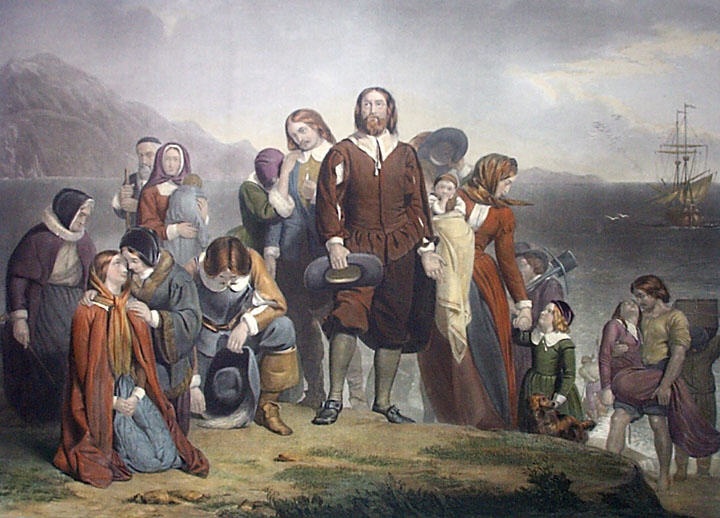7 Things You Might Not Have Known About the Pilgrims
Posted on November 27, 2013 in Religious Freedom by Nathan Cherry

At Thanksgiving we briefly return our attention to the Pilgrims as we remember the incredible voyage they made to the “new world” in search of religious freedom. As we look back and remember not just the Pilgrims, but what our Founder’s endured to establish and ensure religious freedom in America it is almost surreal to think our greatest battle presently is over religious freedom.
Lest we forget the Pilgrims and their bravery and sacrifice, I want to share a few things you might not have known about that fateful voyage so many years ago.
1. All the people aboard the Mayflower were not Pilgrims: In our retelling of the story of the Mayflower we have often assumed that every person aboard was a Pilgrim in search of the new world for religious freedom. The historic truth is that some aboard the ship were simply along for the ride; others just wanted to “try something new.” Of the 102 people aboard the Mayflower, only 50 were actually Pilgrims. Also aboard the ship were sailors, dogs, rats and mice, cats, goats, pigs, and chickens.
2. One industrious Pilgrim, William Mullins, brought with him 126 pairs of shoes and 13 pairs of boots to the new world to sell to fellow settlers once they arrived.
3. Children did not go to school when the Plymouth colony was being established. From age four or five they would join the family in farming and other duties. When they were not working they would learn to read. The Pilgrims really only had one book available so it was used to teach children to read and then it would be the main book they would read. That book was the Bible.
4. Some Pilgrim parents named their children according to the hopes they had for the new world. As a result, some of the children born to the Plymouth colony had unusual names. Some of those names were: Love and Wrastling Brewster, Remember Allerton, Resolved White, Humility Cooper and Desire Minter.
5. The first winter was really harsh and the Pilgrims were still not familiar with the new world enough to be totally prepared. As a result, many of the Pilgrims died during that first winter. The Pilgrims would bury the dead at night so the Indians could not see how many were dying. They were afraid that if the Indians knew how few were left that they would attack.
6. Most of the images we have of Pilgrims don’t fit reality. Pilgrims did not have shiny gold or silver buckles on their shoes and hats. Most did not wear all black clothing with white collars. The average pilgrim wore bright colored clothing that was red-brown, blue, green, and purple. Once a child was about 6 years old he or she dressed as a miniature adult.
7. Thanksgiving was not an official holiday until 1777 when the first Continental Congress declared it to be a holiday. By 1815 the practice of celebrating Thanksgiving was nearly dead when a campaign to revive it was waged in 1837 by writer Sarah Josepha Hale. President Lincoln proclaimed it a national holiday to be celebrated in November in 1863. But it was President Franklin D. Roosevelt that once and for all finalized Thanksgiving on the fourth Thursday of November.
These few interesting facts about the Pilgrims and their journey to the new world in search of freedom are but a drop in the hat to what took place. Historically we probably know less about the first Thanksgiving and what the Pilgrims experienced than what we should. Much has been lost over time and the original meaning and purpose for Thanksgiving has been replaced with trivial details and consumerism.
We would be served well to study what the Pilgrims experienced, why they were willing to endure such hardship, and the faith that guided them. Rather than plan for shopping trips we would be better off spending Thanksgiving in thanks for our blessings; such as health, food, water, clothing, and the people we love. These blessings are often overlooked, but are worthy of our gratitude to The Almighty for His continual providence and provision.
